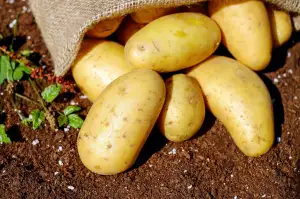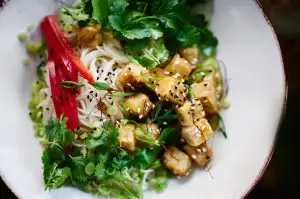Mastering the Art of Cooking Rice in a Pressure Cooker: Your Ultimate Guide to Flawless Results

- Benefits of using a pressure cooker for rice
- Choosing the right type of rice for pressure cooking
- Preparing the pressure cooker for cooking rice
- Measuring the rice and water ratio correctly
- Adding flavorings and seasonings to enhance the taste
- Setting the cooking time and pressure level
- Cooking rice in a pressure cooker step-by-step
- Releasing the pressure and fluffing the rice
- Tips and tricks for perfect rice in a pressure cooker
Cooking rice can sometimes be a daunting task, with the risk of ending up with either undercooked or overcooked grains. However, using a pressure cooker can revolutionize your rice cooking experience. A pressure cooker is a versatile kitchen appliance that uses steam and high pressure to cook food quickly and efficiently. When it comes to cooking rice, a pressure cooker ensures perfectly cooked grains every time. In this guide, we will take you through the process of mastering the art of cooking rice in a pressure cooker, so you can enjoy flawless results with ease.
Benefits of using a pressure cooker for rice
Using a pressure cooker to cook rice has several benefits. Firstly, it significantly reduces the cooking time compared to traditional stovetop methods. This is because the high pressure inside the cooker speeds up the cooking process by raising the boiling point of water. Secondly, a pressure cooker ensures even heat distribution, resulting in uniformly cooked rice without any undercooked or overcooked grains. Additionally, the sealed environment of a pressure cooker helps retain moisture, making the rice fluffy and tender. Lastly, using a pressure cooker requires less monitoring and stirring, allowing you to multitask in the kitchen while your rice cooks to perfection.
Choosing the right type of rice for pressure cooking
When it comes to cooking rice in a pressure cooker, choosing the right type of rice is crucial for achieving perfect results. While most types of rice can be cooked in a pressure cooker, some varieties are better suited for this method than others.
Short-grain rice, such as Japanese sushi rice or Arborio rice, is ideal for pressure cooking. This type of rice has a higher starch content, which gives it a stickier texture when cooked. It also absorbs flavors more easily, making it perfect for dishes like risotto or sushi.
Long-grain rice, like Basmati or Jasmine rice, can also be cooked in a pressure cooker but may require slightly different cooking times and water ratios. Long-grain rice tends to have a lighter and fluffier texture when cooked, making it great for serving alongside curries or stir-fries.
It's important to avoid using quick-cooking or instant rice in a pressure cooker as they are already partially cooked and won't hold up well under pressure. Additionally, wild rice or brown rice may require longer cooking times and additional water compared to white rice.
Ultimately, the choice of rice depends on personal preference and the specific dish you're preparing. Experiment with different types of rice to find your favorite and remember to adjust cooking times and water ratios accordingly for the best results.
Preparing the pressure cooker for cooking rice
Preparing the pressure cooker for cooking rice is an important step to ensure flawless results. Start by thoroughly cleaning the pressure cooker and its components. Check the rubber gasket for any signs of wear and tear, as a faulty gasket can affect the cooking process. Next, add water to the pressure cooker up to the minimum required level indicated by the manufacturer. Place the trivet or steamer basket inside the cooker to elevate the rice above the water level. Finally, securely close and lock the lid, ensuring that it is properly aligned with the cooker base. This will create a tight seal necessary for pressure cooking. By following these steps, you are now ready to move on to measuring and adding your rice and water ratio correctly.
Measuring the rice and water ratio correctly
Measuring the rice and water ratio correctly is crucial for achieving perfectly cooked rice in a pressure cooker. The general rule of thumb is to use a 1:1 ratio of rice to water for white rice. However, this may vary depending on the type of rice you are using. For example, brown rice typically requires more water, usually a 1:1.5 ratio. It's important to consult the specific instructions for your pressure cooker as well, as some models may have different recommendations. Remember to adjust the amount of water based on personal preference for softer or firmer rice. By measuring the rice and water accurately, you can ensure that your rice turns out fluffy and delicious every time.
Adding flavorings and seasonings to enhance the taste
Adding flavorings and seasonings to enhance the taste of your rice is a great way to elevate its flavor profile. While plain rice can be delicious on its own, adding a few extra ingredients can take it to the next level. Consider adding aromatics like garlic, onions, or ginger to infuse the rice with their flavors. You can also experiment with herbs and spices such as bay leaves, cinnamon sticks, or cumin seeds for a more aromatic and flavorful rice. Additionally, using broth instead of water can add depth and richness to your rice. Don't be afraid to get creative and try different combinations of flavors to find your favorite!
Setting the cooking time and pressure level
Setting the cooking time and pressure level is crucial for achieving perfectly cooked rice in a pressure cooker. The cooking time will depend on the type of rice you are using, as different types require different cooking times. Generally, white rice takes about 3-4 minutes at high pressure, while brown rice may take around 20 minutes. Adjust the cooking time accordingly. As for the pressure level, most recipes recommend using high pressure for rice. However, always refer to your pressure cooker's manual for specific instructions on setting the pressure level.
Cooking rice in a pressure cooker step-by-step
Cooking rice in a pressure cooker is a quick and efficient way to achieve perfectly cooked grains every time. Follow these step-by-step instructions for flawless results:
1. Rinse the rice: Start by rinsing the rice under cold water until the water runs clear. This removes excess starch and helps prevent the rice from becoming sticky.
2. Add rice and water: Place the rinsed rice in the pressure cooker along with the appropriate amount of water. The general rule is to use a 1:1 ratio of rice to water for white rice, and 1:1.5 ratio for brown rice.
3. Lock the lid: Securely lock the lid onto the pressure cooker, ensuring that it is properly sealed.
4. Set cooking time and pressure level: Depending on your specific pressure cooker model, select the appropriate cooking time and pressure level for your type of rice. Consult your pressure cooker's manual for guidance.
5. Start cooking: Turn on the heat and allow the pressure cooker to come up to full pressure. Once it reaches full pressure, reduce the heat to maintain steady pressure throughout the cooking process.
6. Cook under pressure: Let the rice cook under pressure for the recommended time according to your recipe or manual instructions.
7. Release pressure: After cooking, carefully release the pressure from the cooker using either natural release or quick release method as per your preference or recipe requirements.
8. Fluff and serve: Open the lid once all of the steam has been released, fluff up the cooked rice gently with a fork or spatula, and serve hot.
By following these simple steps, you can enjoy perfectly cooked rice with just a few minutes of preparation time using your trusty pressure cooker
Releasing the pressure and fluffing the rice
Once the cooking time is complete, it's important to release the pressure from the cooker before opening it. This can be done in two ways: natural release and quick release.
For natural release, simply turn off the heat and let the pressure cooker sit for about 10 minutes. This allows the pressure to gradually decrease on its own. After 10 minutes, carefully open the pressure valve to release any remaining steam.
If you're short on time, you can use the quick release method. Using a long-handled spoon or tongs, carefully move the pressure valve from "sealing" to "venting" position. Be cautious as hot steam will forcefully escape from the valve. Once all the steam has been released and the pressure indicator has dropped, it is safe to open the cooker.
After releasing the pressure, it's time to fluff up your rice with a fork or a rice paddle. Gently separate each grain of rice to prevent clumping and ensure even distribution of moisture and flavorings.
By following these steps, you'll achieve perfectly cooked rice every time using your pressure cooker. Now it's time to enjoy your deliciously fluffy rice as a side dish or as a base for your favorite recipes!
Tips and tricks for perfect rice in a pressure cooker
1. Rinse the rice before cooking to remove excess starch and improve texture.
2. Use the correct water-to-rice ratio for different types of rice (usually 1:1 for white rice and 1:1.5 for brown rice).
3. Let the pressure cooker naturally release pressure for a few minutes before manually releasing it to avoid overcooking.
4. Avoid stirring the rice during cooking as it can lead to stickiness.
5. Experiment with adding spices, herbs, or broth to infuse extra flavor into the rice.
6. Allow the cooked rice to rest for a few minutes after fluffing to ensure even moisture distribution.
7. Invest in a good-quality pressure cooker with reliable pressure settings for consistent results.
8. Adjust cooking time based on personal preference - shorter time for firmer grains, longer time for softer grains.
9. Keep an eye on the pressure valve and ensure it is properly sealed before starting the cooking process.
10. Practice makes perfect - don't be discouraged if your first few attempts are not flawless, keep trying and adjusting until you achieve your desired results.
Remember, with these tips and tricks, you'll soon be enjoying perfectly cooked rice every time using your pressure cooker!
Conclusion: Enjoying perfectly cooked rice with a pressure cooker is now within your reach. By following the steps outlined in this guide, you can achieve flawless results every time. The pressure cooker not only saves time and energy but also ensures that each grain of rice is cooked to perfection. Experiment with different types of rice and flavorings to create a variety of delicious dishes. Say goodbye to soggy or undercooked rice and embrace the convenience and excellence of cooking rice in a pressure cooker. Elevate your culinary skills and enjoy the satisfaction of serving perfectly cooked rice to your family and friends.
Published: 19. 11. 2023
Category: Food



